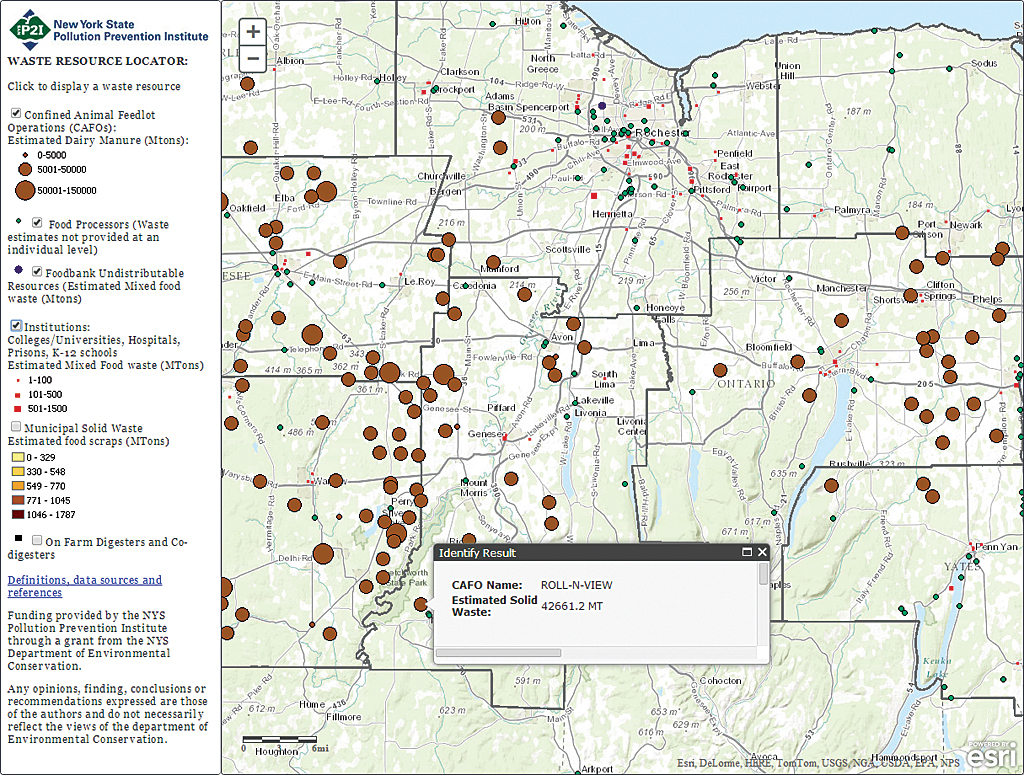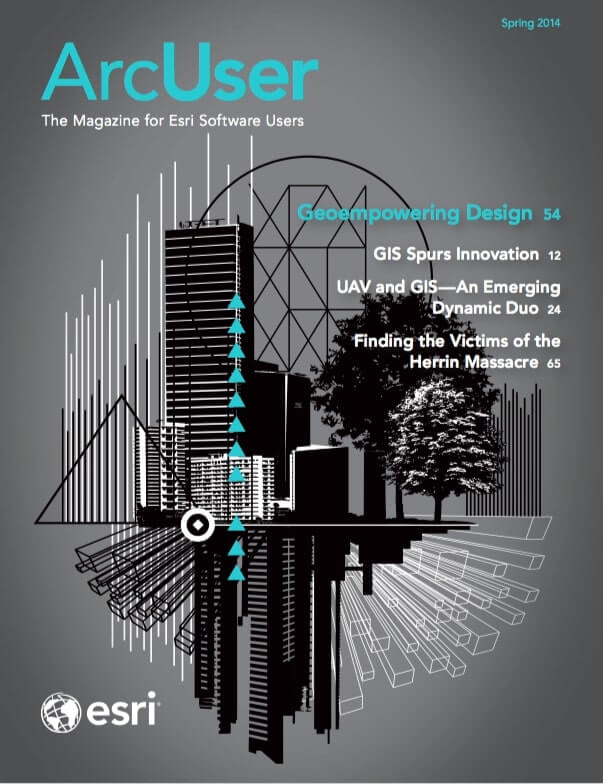Mapping more effective food waste utilization
Although your mother always told you not to waste food, it is estimated by the US Department of Agriculture that 30 to 40 percent of the food supply goes to waste.
Not all of this is plate waste. Scraps such as peels, by-products of food production, or rejected products are examples of organic wastes generated at virtually every step along the path from farm to fork. The disposal of food waste costs money and often has negative environmental impacts. For example, food waste sent to a landfill releases methane, a powerful greenhouse gas.

However, organic materials such as food waste can become valuable resources for renewable bioproducts that don’t use land that otherwise might be used for food production. Although for centuries many methods have been used to convert bioresources to bioproducts, interest and investment in bioproduct technologies have increased in recent years as environmental and energy security concerns have grown.
A Local Problem
Waste utilization is an inherently local problem. Unlike fossil resources, transporting food waste over large distances is difficult to justify. Furthermore, the food waste produced in a given region is unique because it depends on the distribution of agriculture, industry, and food service institutions. These characteristics of waste influence how it can be utilized.
For example, in the Finger Lakes region of New York State, there is a strong dairy industry. Large dairy farms in this region are beginning to use anaerobic digestion for dairy manure treatment. Anaerobic digestion (AD) is a series of bacterial processes in which organic matter is degraded in an environment without oxygen. The process, similar to the process that occurs inside a cow’s stomach, results in biogas. Anaerobic digestion is useful to farmers as a way to manage odor and the nutrient loading on their soil resulting from applying manure as fertilizer on fields.
Composed primarily of methane and carbon dioxide, biogas can be used in many of the same ways as natural gas. Biogas produced as a product of the anaerobic digestion process is often used to generate electricity that can offset on-site electricity use or be sold back to the electric grid. However, high anaerobic digestion infrastructure investment costs and the modest volumes of biogas produced from the anaerobic digestion of manure have made the financial viability of this strategy challenging.
Boosting Biogas Production
If a region has a large amount of food processors and other food waste sources, one solution is codigestion, which utilizes food waste along with manure as anaerobic digestion feedstock. Since food waste has not yet been digested by an animal, it generally has a higher potential to produce biogas. Combining food waste with manure often creates synergies that can make the process run more efficiently.
Codigestion has been found to increase biogas production. In fact, research by the International Energy Agency (IEA) reported biogas production increases of 25–400 percent for codigestion compared to just manure. In addition, the disposal of food waste often generates much needed revenue in the form of tipping fees, which are the fees paid to a business for disposing of waste.
Locating Food Waste Information
However, finding information about food processing, cafeteria, or other sources of food waste is not easy. The Organic Resource Locator (ORL) is addressing this problem. Under development by the Rochester Institute of Technology (RIT) and the New York State Pollution Prevention Institute (NYP2I) housed at RIT, ORL uses Esri technology. Funding for the ORL has been made possible by New York’s Department of Environmental Conservation (NYDEC).
ORL utilizes customizable ArcGIS for Server-based web applications that allow every aspect of the application to be controlled—from basemap selection to cartographic design—and the incorporation of advanced spatial analytic tools. The extensive library of web-based geospatial tools and sample code for many common functions available through Esri’s online support and user forums has made implementation of the ORL easier.
A variety of GIS data sources is used in ORL, including geocoded data from the US Departments of Health and Education that locates hospitals and schools. Address or coordinate information from NYDEC environmental permitting records was incorporated so regulated livestock farms could be located. Business databases provided information on food processors. Estimates of the amount of waste generated annually were made based on empirical relationships derived from waste audits reported in scientific journals or surveys. This data was combined with characterization of the type of wastes, which is important to ORL users.
Businesses, such as food processors, that generate waste can see where anaerobic digestion facilities are located. Conversely, existing facilities or those developing anaerobic digestion projects can see what types of food waste are available and where these are generated.
Supporting facilities that specialize in anaerobic digestion of food waste supports the state of New York’s renewable energy portfolio and is aligned with the goals of the New York Power Authority (NYPA) and the New York State Renewable Energy Development Authority (NYSERDA). ORL has been used to support several projects to assist regional anaerobic digestion developers through the green technology development programs provided through the NYP2I. Data on available waste supplied by ORL helped developers with financial analysis and system sizing as well as informing anaerobic digestion system design and operating parameters.
Positive Feedback
Initial feedback on the ORL has been positive. It was demonstrated at an anaerobic digestion workshop. Stakeholders from nearby Vermont, where a ban on landfilling of organics was recently passed, share a vision for a similar tool. The Cornell Manure Management website formerly housed a similar food waste sourcing tool.
“Several people have inquired when the tool would be updated and relaunched,” said Jennifer Pronto, a research assistant at Cornell. “Many farms constructing anaerobic digesters are now able to accept off-farm substrates and need assistance in locating suitable sources. This new tool developed by RIT will help anaerobic digester operators and their advisers perform a comprehensive local search for digester substrates matching a specified profile, while simultaneously helping food processors find an anaerobic digester system within a viable transportation distance.”
ORL is available on the NY Pollution Prevention website, where it will be maintained and enhanced. Future developments include expanding the tool beyond the Finger Lakes Region to all of New York state. Additional waste utilization pathways are also planned that include incorporating data on anaerobic digestion at a waste-to-ethanol production plant, wastewater treatment plants, compost facilities, and other beneficial-use facilities. The hope is that ORL will be an invaluable tool to move from an era in which food waste is seen as a burden to an era in which food waste is a valuable, sustainable energy resource.
Resources
Learn more about reducing food waste at the US Environmental Protection Agency’s Food Recovery Challenge website.
Braun, Rudolf, and Arthur Wellinger. (2010) Potential of Codigestion [PDF].
Hall, Kevin D., Juen Guo, Michael Dore, Carson C. Chow. “The Progressive Increase of Food Waste in America and Its Environmental Impact.” PLOS ONE November 25, 2009, DOI: 10.1371/journal.pone.000794
US Environmental Protection Agency. Overview of Greenhouse Gases.

